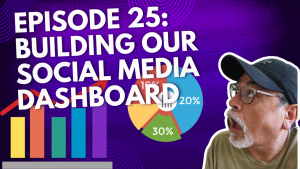It is true that a normal, well-adjusted person would never consider starting a pharmaceutical company! Starting a company of any kind is often a real “eye opening” experience. Bringing the perfect pill, or new molecular entity (NME), to market is beyond expensive. You might think there is no way a small-time entrepreneur can do it without many millions of dollars. This is true for NME’s. Yet, there is a pathway to offer value in this space! A small pharmaceutical startup’s path is to take advantage of the 505(b)(2) approval process.
What is the 505(b)(2) Pathway?
The 505(b)(2) pathway suits small to medium sized companies competing in the changing drug market. This option is generally lower cost with a much lower risk, compared to NME development.
Primary clinical data used for FDA filing of a 505(b)(2) come from trials conducted by the originator company to obtain product approval. So, the 505(b)(2) safety and efficacy references come from trials completed by someone else. Generally, the startup does not have to conduct costly clinical trials to prove safety or efficacy. Development costs for these applications can be as low as $3 million. Costs can climb as high as $50 million if the FDA requests extra safety and efficacy trials [1]. A change in the delivery form may require a bio-equivalence trial, but not a trial to prove safety and efficacy. A change in a label claim, or the molecule itself, will require safety and efficacy studies. Safety and efficacy studies are by far the more expensive of the two.

Why on Earth Would You Do That?
Even at the low-end, cost of a 505(b)(2) drug is quite costly. Compared to developing NME’s or competing in generic drug markets, I see more 505(b)(2) products coming to market as a primary strategy for mid-sized, established drug companies. It simply makes sense! An improvement on a proven drug that differentiates it, at lower cost and risk, count me in. Take a look below at how these three product approval categories compare and see if you agree.
New Molecular Entity
The costs of drug development alone should keep someone with an intact mind out of this industry. Drug development costs for NME’s range between $200 million to over $2 billion [2-4]. Some more complex estimates go as high as $4 billion and it can take 10-12 years to bring an NME to market [5]. NME is the space for multibillion-dollar companies that can afford huge investments that may not pan out, not small startups.
Generic Drugs
Generic pharmaceuticals are much less expensive to develop, so you might reason a generic drug is the way to go. Spoiler alert: Generic manufacturing requires significant economies of scale. Costs are significant barriers to entry into this market. Extreme rivalry among competitors and pricing pressures continually reduce margins across the generic industry [1]. Generic products play in a world we used to call, “Death by a thousand cuts…in price!” I appreciate this sector, but as a strategist, I am not a fan.
505(b)(2) Pathway
A study looking at 505(b)(2) approved products (n=~150) over a 5-year period showed the average annual revenue generated was $200 million [1]. Average five-year return on Investment (ROI) for these products was 26 times R&D spend [1]. The ROI ranged from 10x to 36x their R&D spend. Across the board, it seems reasonable to expect a high ROI from well-managed 505(b)(2) products.
505(b)(2) Projects Rarely Fail
There is lower risk of developing an improved version of an already-approved drug. These compounds rarely fail as unexpected side effects are unlikely [1]. Less uncertainty reduces risk and increases the probability of success.

How Do You Identify the Right Target?
The first challenge is identifying the right market opportunity. A thorough understanding of the landscape allows quick recognition of unmet patient, provider, and insurer needs (yes, each group is a customer target in the pharmaceutical industry). To an experienced eye, product opportunities and hurdles stick out like a sore thumb. Knowing where the “potholes” are and how to avoid them saves time and money.
The key questions to answer include:
- What product fits into the 505(b)(2) pathway? “Who is the customer?”
- “What does the market need and is it worth addressing?”
- “Are you targeting a large established market niche, or carving out a new one?”
- The questions are simple, and sometimes the answers are, too. Translating the answers into a real market opportunity is the hard part.
How Do You Find An Answer?
Industry experience managing a P&L for a large pharmaceutical company, or division, is helpful when trying to identify opportunities from existing gaps. Knowing the market can reduce the time and effort discerning the most obvious and most neglected opportunities. Some can be quite lucrative for a small company and its investors.
For example, colleagues of mine brought opportunities to a large Pharma business development VP worth $100 million. The VP told them that anything under $400MM revenue was less than their marketing budget and not worth pursuing. For a small to medium sized company, a product generating over $30MM by year three can be quite rewarding! Particularly if development costs can come in under $4MM.
Real Opportunities & Challenges
Currently, my company consults on project to deliver an oral chemotherapeutic agent that is based on the standard of care in its category. I know this product well, as do the company principals. We all worked for the originator company, so we understand the landscape!
The product is a new delivery form that improves dosing convenience, safety, and conveys economic advantages to patients over the reference listed drug. The project is one-step away from FDA filing. Total development costs should come in under $3MM and expectations of sales by year three seem reasonable, forecasted at between $30MM and $100MM [1]. Of course, the talent of the sales force promoting the product is critical to achieve those numbers.
In our case, timing of approval is our biggest challenge. Finding the right partner to get us to the finish line in a timely and profitable manner are significant challenges. Handling those challenges will be discussed in a future article.
What Lays Ahead
The 505(b)(2) pathway provides a realistic and achievable route to product approval and launch. Inflation is present throughout the economy, and drug development costs continue to escalate along with the cost of skilled labor, equipment, knowledge workers, materials, capital, etc.
As the healthcare market shifts and changes influenced by economic and political realities, we could see fewer opportunities for small startups, even within the 505(b)(2) pathway. Today, opportunities still exist for small startup players in the pharmaceutical marketplace through the 505(b)(2) regulatory approval pathway. Keys to success are the same as with large companies and involves solid, continual planning combined with strategic implementation, and LUCK. Sometimes, challenges come all at once. Other times they come one at a time. Article Three digs deeper into preparing for the “eye-opening” challenges to come for entrepreneurs in this space.
Declarations
Keith Watts, DBA, is a a consultant in the Life Sciences & Healthcare Business practice at Talexto Healthcare Partners, a part of Talexto Holdings, LLC.
Conflicting Interests: Potential conflicts declared as the author actively consults for companies in 505(b)(2) space..
Funding
No financial support of authorship, and/or publication of this article was declared.
References
- Torani, V., et al., 505(b)(2): A Pathway to Competitiveness Through Innovation for Specialty and Generic Companies, in Pharmaceutical Executive. 2019: www.pharmaexec.com. p. 7.
- Freije, I., S. Lamouche, and M. Tanguay, Review of Drugs Approved via the 505(b)(2) Pathway: Uncovering Drug Development Trends and Regulatory Requirements. Therapeutic Innovation & Regulatory Science, 2019: p. 2168479018811889.
- Morgan, S., et al., The cost of drug development: a systematic review. Health Policy, 2011. 100(1): p. 4-17.
- Wouters, O.J., M. McKee, and J. Luyten, Estimated Research and Development Investment Needed to Bring a New Medicine to Market, 2009-2018. JAMA, 2020. 323(9): p. 844-853.
- Schlander, M., et al., How Much Does It Cost to Research and Develop a New Drug? A Systematic Review and Assessment. Pharmacoeconomics, 2021. 39(11): p. 1243-1269.








































Hey Keith! I love the article! I have a few questions about how the 505(b)(2) pathway works. So, is someone using this pathway simply taking the existing drug and testing it for a new purpose not intended by the original maker (and not altering the chemical makeup)? Or are they modifying the chemistry (or delivery method?) slightly to achieve new goals? In this model, do the development companies using the 505(b)(2) pathway have to pay the patent holders of the original drug any royalties?